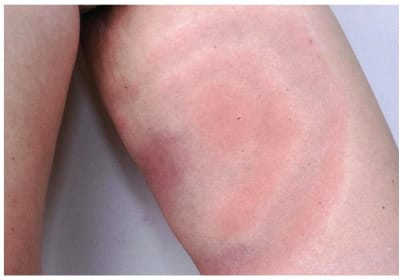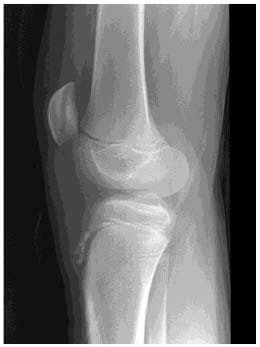Exam Details
Exam Code
:USMLEExam Name
:United States Medical Licensing ExaminationCertification
:USMLE CertificationsVendor
:USMLETotal Questions
:622 Q&AsLast Updated
:Apr 13, 2025
USMLE USMLE Certifications USMLE Questions & Answers
-
Question 471:
A 51-year-old man comes to the office because of a 6-month history of a lump on his tongue that is interfering with his speech and eating; he also has had a 6.8-kg (15-lb) weight loss during this period. He has smoked 1pack of cigarettes daily and has consumed six 12-oz bottles of beer on weekend nights during the past 30 years. His vital signs are within normal limits. Physical examination shows a 1.5-cm mass on the apex of the tongue. Further evaluation of the mass confirms squamous cell carcinoma. It is most appropriate to evaluate which of the following lymph nodes first for evidence of metastasis in this patient?
A. Inferior deep cervical
B. Parotid
C. Retropharyngeal
D. Submental
E. Superior deep cervical
-
Question 472:
After being severely beaten and sustaining a gunshot wound to the abdomen, a 42-year-old woman undergoes resection of a perforated small bowel. During the operation, plastic reconstruction of facial fractures, and open reduction and internal fixation of the left femur are also done. Thirty-six hours postoperatively, she is awake but not completely alert. She is receiving intravenous morphine via a patient-controlled pump. She says that she needs the morphine to treat her pain, but she is worried that she is becoming addicted. She has no history of substance use disorder. She drinks one to two glasses of wine weekly. Which of the following initial actions by the physician is most appropriate?
A. Reassure the patient that her chance of becoming addicted to narcotics is minuscule
B. Maintain the morphine, but periodically administer intravenous naloxone
C. Switch the patient to oral acetaminophen as soon as she can take medication orally
D. Switch the patient to intramuscular lorazepam
E. Switch the patient to intravenous phenobarbital
-
Question 473:
A technician wants to determine whether cytomegalovirus (CMV) DNA is present in the blood of a bone marrow transplant recipient. DNA purified from the leukocytes of the patient is reacted in a mixture containing oligonucleotides specific for CMV DNA, thermostable DNA polymerase, and nucleotides. Repetitive cycles of heating and cooling are performed, and the reaction product is detected by gel electrophoresis. The technician most likely used which of the following laboratory procedures on this patient's blood?
A. Northern blotting
B. Polymerase chain reaction
C. Reverse transcription
D. Southern blotting
E. Western blotting
-
Question 474:

A 16-year-old boy comes to the physician because of a rash on his left inner thigh that first appeared 2 days after he returned from a hunting trip with friends in Minnesota. A photograph of the rash is shown. Without treatment, this patient is at increased risk for which of the following?
A. Carditis
B. Glomerulonephritis
C. Hepatitis
D. Pancreatitis
E. Thrombocytopenia
-
Question 475:
A 52-year-old man is brought to the emergency department 30 minutes after he had an episode of chest pain radiating to his jaw while shoveling snow. His pulse is 80/min, and blood pressure is 130/70 mmHg. The lungs are clear to auscultation. Cardiac examination shows an S4. While undergoing an ECG, the patient says that he feels the chest pain returning. The most appropriate immediate treatment is a drug with which of the following mechanisms of action?
A. Increases cAMP concentration
B. Increases nitric oxide concentration
C. Inhibits potassium flux D. Inhibits sodium flux
-
Question 476:
A 22-year-old woman comes to the office because of a 3-day history of cold symptoms and a 1-week history of progressive fatigue. Six weeks ago, she received a kidney transplant from a living, related donor. Immediately after the operation, she received monoclonal anti-CD3 therapy. Current medications are azathioprine, cyclosporine, and prednisone. Her temperature is 39°C (102.2°F). Physical examination shows a well-healed surgical scar. Serum studies show that her urea nitrogen and creatinine concentrations have tripled. A diagnosis of allograft rejection is suspected. In addition, this patient's clinical presentation is best explained by an infection with which of the following agents?
A. Adenovirus
B. BK virus
C. Epstein-Barr virus
D. Herpes simplex virus
E. Varicella-zoster virus
-
Question 477:
A new test to detect the presence of malarial antibodies by ELISA is evaluated in 100 patients with active untreated malaria proven by demonstration of blood-borne parasites and in 100 patients with no history of infection. Results of testing are shown:

Which of the following is the specificity of this test?
A. 65%
B. 71%
C. 75%
D. 94%
E. 95%
-
Question 478:
A 30-year-old woman comes to the physician because of a 2-day history of abdominal pain. She has a history of recurrent upper respiratory tract infections, sinusitis, and pancreatitis. She has thick nasal secretions. She says that her sweat is salty and crystallizes on her skin. Her vital signs are within normal limits. Physical examination shows epigastric tenderness. Genetic testing for the 36 most common mutations shows a detectable mutation (G551D) in one allele of the CFTR gene. Which of the following best explains this patient's clinical phenotype?
A. Loss of heterozygosity of the CFTR gene has occurred in the pancreas
B. Only one G551D allele is needed in CFTR
C. The patient is a CFTR obligate carrier
D. The patient's CFTR mutation is unrelated to her clinical phenotype
E. The second CFTR mutation was not detected by the testing obtained
-
Question 479:

A 12-year-old boy is brought to the physician by his mother because of a 1-month history of pain below the left knee. His mother says, "He can usually walk around, but he hasn't been able to play in any of his soccer games since this all began." Examination of the left knee shows warmth, swelling, and tenderness. An x-ray of the knee is shown. Which of the following structures is attached to the abnormal anterior tibial area?
A. Anterior cruciate ligament
B. Gastrocnemius muscle
C. Patellar ligament
D. Popliteus muscle
E. Posterior cruciate ligament
F. Soleus muscle
-
Question 480:
In a cohort study of elderly women, the relative risk ratio for hip fractures among those who exercise regularly is 1.2 (95% confidence interval of 1.1 to 1.8). Which of the following is the most appropriate conclusion about the effect of regular exercise on the risk for hip fracture?
A. Statistically nonsignificant increase in risk
B. Statistically nonsignificant overall decrease in risk
C. Statistically significant overall decrease in risk
D. Statistically significant overall increase in risk
Tips on How to Prepare for the Exams
Nowadays, the certification exams become more and more important and required by more and more enterprises when applying for a job. But how to prepare for the exam effectively? How to prepare for the exam in a short time with less efforts? How to get a ideal result and how to find the most reliable resources? Here on Vcedump.com, you will find all the answers. Vcedump.com provide not only USMLE exam questions, answers and explanations but also complete assistance on your exam preparation and certification application. If you are confused on your USMLE exam preparations and USMLE certification application, do not hesitate to visit our Vcedump.com to find your solutions here.